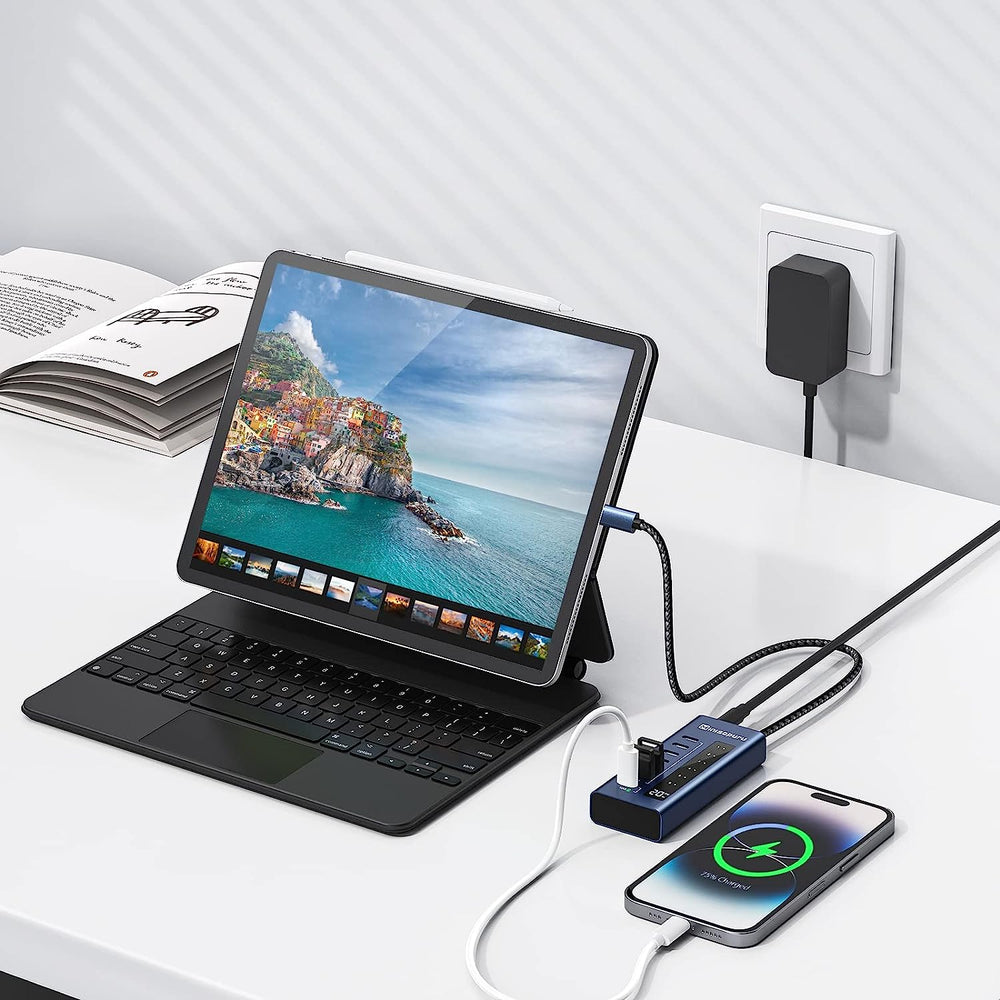Just like your CPU and GPU choices, the type of storage drive you select can significantly affect your gaming experience.
A high-speed SSD can drastically reduce loading times and enhance system responsiveness, whereas a slower HDD might add minutes of wait time to each gaming session.
When deciding between HDD and SSD for gaming, it's crucial to choose the right storage drive that aligns with your goals and budget. Below, we'll outline the benefits of both traditional hard drives (HDDs) and solid-state drives (SSDs).
SSD vs. HDD: Performance vs. Price
Essentially, the decision between HDD and SSD hinges on whether you prioritize performance or storage capacity.
Solid State Drives (SSDs) utilize flash-based memory for data storage, which means they have no moving parts. They offer faster read/write speeds, lower access times (less latency), and are more expensive per gigabyte of storage compared to HDDs.
Hard Disk Drives (HDDs) store data on spinning magnetic media accessed by a read/write head on an actuator arm, similar to a record player. They have slower read/write speeds, higher access times, and are less costly per gigabyte of storage than SSDs.
Understanding Storage Performance
The primary metrics for evaluating a storage device's performance are its read/write speeds—the time it takes to retrieve or save data.
Sequential read/write speeds are the most commonly used performance metric, representing scenarios where large blocks of data are moved sequentially, such as copying and pasting large files. These speeds are measured in megabytes per second (MB/s).
Random read/write speeds involve data located in random blocks around the drive, which takes longer to read or write than sequential blocks. This reflects daily use well because games and applications often read and write small files and access data not found in sequence. These speeds are measured in IOPS (input/output operations per second).
Synthetic benchmarks are often used in marketing storage drives but should be interpreted with caution as they may not accurately reflect real-world performance. Manufacturers might showcase the drive's best performance under high queue depth conditions, which may not be realistic for most users.
SATA SSDs vs. NVMe SSDs
When shopping for SSDs, you'll likely encounter two connection formats: SATA III and NVMe. NVMe is rapidly becoming the standard, but understanding the difference is still valuable.
SATA III (Serial ATA) uses a cable that connects many older SSDs and HDDs to the PC's motherboard via the SATA protocol.
NVMe (Non-Volatile Memory Express) allows direct connection to the motherboard's PCIe lanes, offering higher throughput and lower latency. PCIe 3.0 and 4.0 drives can transfer data at thousands of megabytes per second—significantly faster than SATA III—with PCIe 4.0 drives roughly doubling the bandwidth of 3.0.
Ensure your system supports NVMe before upgrading, as older motherboards and BIOS may not be compatible. Check your motherboard documentation or search online for specifications.
Differences Between SSD Form Factors
Form factors are not just physical distinctions; they also determine how the drives connect to and communicate with your motherboard.
2.5-inch
2.5-inch SSDs resemble traditional mechanical drives visually. Consumer drives typically use SATA III protocol and require separate power and data cables. However, NVMe is becoming the new standard for consumer SSDs.
M.2
M.2 drives are shaped like small, thin rectangles, often likened to sticks of gum. They plug directly into an M.2 slot on the motherboard and typically use the NVMe transfer protocol, although some older devices may use SATA. M.2 connectors are keyed differently to prevent incompatible socket use.
M.2 slots might be located under thermal shields or even on the back of Mini-ITX motherboards. Consult your motherboard documentation if you're having trouble locating M.2 slots.
AIC
AIC (Add In Card) SSDs connect to a PCIe slot on the motherboard for power and data, using PCIe lanes to communicate directly with the system, similar to an NVMe M.2 SSD. If your system lacks a free M.2 slot, AIC SSDs can also serve as PCIe-to-M.2 adapters.
Other Form Factors
There are additional SSD interface types and form factors, such as NVMe-based U.2 SSDs, typically used in professional/server environments rather than gaming builds.
Why Use an HDD?
While HDDs are generally slower and less durable than SSDs, they offer a significant advantage: capacity. As a secondary storage drive, an HDD can provide terabytes of extra space at a lower cost to store everything that doesn't fit on your primary SSD.
When comparing HDDs, consider:
Spindle speed, the primary factor in determining read/write speed, with high-performing drives featuring 7,200 RPM, though speeds can range from 5,400 to 15,000 RPM. Higher speeds generally indicate better performance.
Form factor, which may be 3.5-inch or 2.5-inch, requiring a separate cable for power and data in consumer devices.
Should You Choose an HDD or SSD?
Switching from an HDD to an SSD is one of the most impactful upgrades you can make.
A popular approach is pairing an SSD for quick boot and load times with a larger capacity HDD for less frequently accessed files.
Your storage solution might vary based on factors like budget, hardware, and usage patterns. Regardless of your decision on HDD vs SSD for gaming, consider how a fast, reliable storage solution can enhance your PC's performance.

